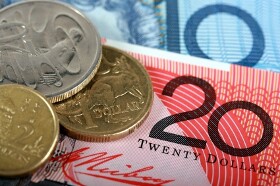
The Australian dollar attempted to rally today, ignoring negative domestic macroeconomic data. But the currency was unable to keep gains, falling against the majority of its most-traded rivals by now.
Markit released flash PMIs, both manufacturing and services, for November. The manufacturing Purchasing Managers’ Index slipped a bit to 49.9 from 50.0 in October. The figure was slightly above the median forecast of 49.8. The services PMI dropped to 49.5 from 50.1. That was a significantly weaker reading than 53.5 predicted by analysts. With the indicators below the neutral 50.0 level of no-change, both sectors demonstrated a contraction. Commonwealth Bank of Australia Chief Economist Michael Blythe commented on the results:
Activity in the key manufacturing and services sectors continues to bounce around the 50 line that separates expansion from contraction. This is a particularly disappointing result when benchmarked against interest rate cuts, tax cuts, rising house prices and a still solid labour market.
Readings on new orders and employment offer a glimmer of positive news. But the challenges faced by Australian businesses are evident in the accelerating growth in input prices and the slowing trend in output prices. Competitive pressures and weak demand are taking a toll.
With no more domestic releases scheduled for today and Monday, the Aussie will be driven by the general market sentiment, which itself currently largely depends on the news about US-China trade talks.
AUD/USD traded at 0.6787 as of 11:50 GMT today after opening at 0.6784 and rallying to the daily high of 0.6803. EUR/AUD was about flat at 1.6293 after falling to the daily low of 1.6258. AUD/JPY slipped from 73.71 to 73.63, erasing the earlier rally to 73.92.
If you have any questions, comments, or opinions regarding the Australian Dollar, feel free to post them using the commentary form below.